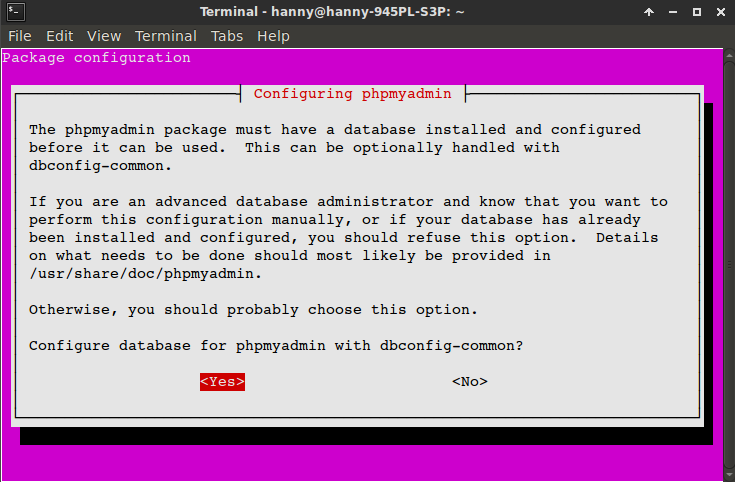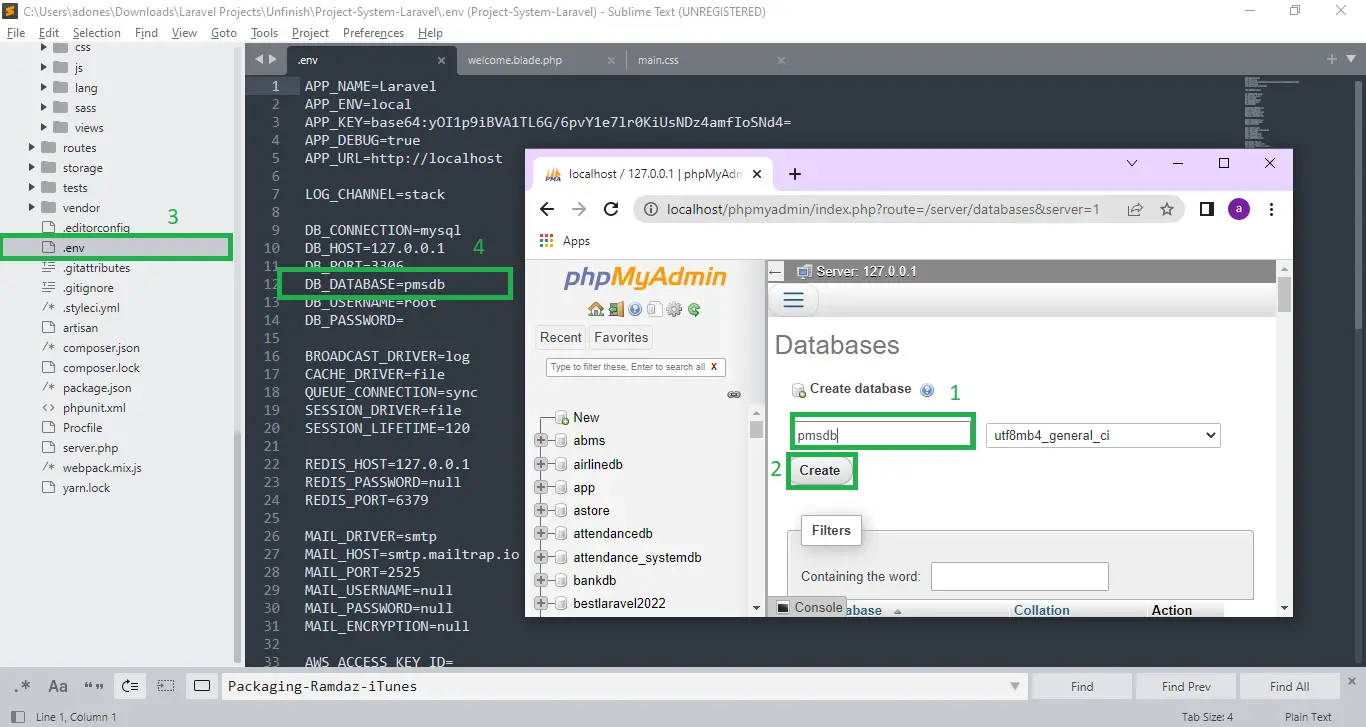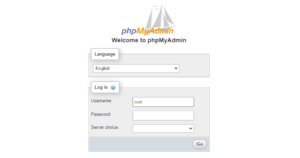
- #INSTALL PHPMYADMIN HOW TO#
- #INSTALL PHPMYADMIN INSTALL#
- #INSTALL PHPMYADMIN UPDATE#
- #INSTALL PHPMYADMIN PASSWORD#
#INSTALL PHPMYADMIN PASSWORD#
Instead of password, enter a password that you will have to remember.Ĭonfirm the changes you just made by typing: FLUSH PRIVILEGES To change the authentication type from auth_socket to mysql_native_password and use a password to log in to the root user, type: ALTER USER 'root' 'localhost' IDENTIFIED WITH mysql_native_password BY 'password' | mysql.sys | *THISISNOTAVALIDPASSWORDTHATCANBEUSEDHERE | mysql_native_password | localhost | | ssion | *THISISNOTAVALIDPASSWORDTHATCANBEUSEDHERE | mysql_native_password | localhost | | user | authentication_string | plugin | host | Here you can clearly see how the root user has an auth_socket authentication type. To do so, open the MySQL prompt $ sudo mysqlĬheck the authentication methods for each MySQL user by typing: SELECT user, authentication_string, plugin, host FROM er Ī list of all authentication methods for MySQL users is now displayed. To log in as MySQL root via phpMyAdmin change the authentication method. Configuring the Password for the MySQL root accountĪccessing as a MySQL root user requires an authentication auth_socket instead of a simple password. You can either choose to configure only one of these two users or both.

instead log in as a MySQL user root or as a database manager via phpMyAdmin interface. To use phpMyAdmin, do not log in as the user created automatically during the installation. To apply all the changes, restart Apache by typing: $ sudo systemctl restart apache2 Managing access privileges To do so type in: $ sudo phpenmod mbstring The only thing you will need to do is activating the PHP mbstring extension. Once the installation is completed, a phpMyAdmin configuration file will be added here: /etc/apache2/conf-enabled/nf The Just like beforehand, enter a new password, press TAB to select Ok and press Enter. Now enter and confirm a password for the application. Enter a new password, press Tab to select OK and press Enter. You are now required to enter a password for the administrator database. Once pressed Enter, the following screen will be displayed: If you do not press the spacebar, the files required for installation will not be transferred.

To select it, press the spacebar and then press Enter. Select apache here, but be careful, the red dash does not select apache 2.
#INSTALL PHPMYADMIN INSTALL#
$ sudo apt install phpmyadmin php-mbstring php-gettextīy typing Y and pressing Enter to confirm.
#INSTALL PHPMYADMIN UPDATE#
PhpMyAdmin is on the standard Ubuntu repository.įirst update the apt index, and then download and install phpMyAdmin: $ sudo apt update In case of a local server, go to the next step and open the terminal of your server. If you haven’t done so yet, following our guide is recommended to securely connect with the SSH protocol.
#INSTALL PHPMYADMIN HOW TO#
In this guide you will learn how to install phpMyAdmin and how to secure its access on Linux Ubuntu 18.04.įirst, connect to your server via an SSH connection. Save and close the file.PhpMyAdmin is a GUI (Graphic User Interface) that allows to create, store and edit entire databases created with MySQL. You can setup HTTPD SSL as described here (mod_ssl) and allow LAN / WAN users or DBA user to manage the database over Replace with your workstation IP address: Require ip 10.1.3.53Īgain find the following line: Allow from 127.0.0.1

You need to edit /etc/httpd/conf.d/nf file, enter: # mysql_secure_installation Step #3: Configure phpMyAdmin

Set root password and secure mysql installation by running the following command: Turn on and start the mysql service, type: You need download and install MySQL server on CentOS/RHEL using the following yum command: PhpMyAdmin.noarch 0:3.5.1- 1.el6 Install MySQL server on a CentOS/RHEL Verifying : phpMyAdmin-3.5.1- 1.el6.noarch 1/ 1 Installing : phpMyAdmin-3.5.1- 1.el6.noarch 1/ 1 PhpMyAdmin noarch 3.5.1- 1.el6 epel 4.2 M > Package phpMyAdmin.noarch 0:3.5.1- 1.el6 will be installed You might consider running yum-complete-transaction first to finish them. There are unfinished transactions remaining.


 0 kommentar(er)
0 kommentar(er)
